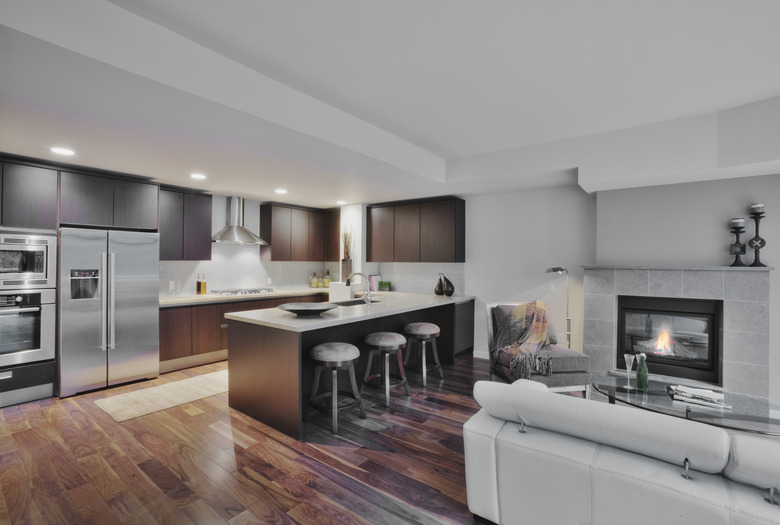How To Adjust The Temperature On A GE Profile Arctica Refrigerator
Discontinued for several years now, the GE Profile Arctica Refrigerator was a popular side-by-side door model. As the models get older, they're all zooming in at the long end of life expectancy for a fridge, which is 10 years for the low end and 18 years for impressively long-lived. Understanding the GE refrigerator temperature setting process can help you navigate potentially unstable temperatures that could signify whether your fridge may soon be ready for replacement.
Reasons Temperatures May Fluctuate
Reasons Temperatures May Fluctuate
If you're experiencing GE Profile refrigerator temperature control problems, there are several reasons this could be happening, some of which are completely normal and easily solved. For a few dollars, buy a standalone fridge thermometer to see the actual temperature inside the fridge or freezer, as this will show if the "real" temperature matches the temperature your fridge is set at. Once you know the actual temperature, it'll help you manage your fridge's temperature or know whether it's time to look at a new fridge.
If you're finding things just aren't cooling enough, you should try a few steps to help make sure your fridge is working at its best capacity. First, ensure there's about ¼-inch or more of clearance on the sides and at least 1-inch clearance on the top and back of the fridge, so air can circulate. Maybe someone bumped the fridge too far back by accident.
If there is enough clearance, ensure the doors haven't fallen out of alignment. The GE Profile Arctica owner's manual explains how to use a 7/16-inch socket wrench to do this. When doors aren't aligned, cool air escapes, causing unstable climate.
Make sure the fridge is level side-to-side or coolant can't circulate. Always make sure the air vents are unblocked and the freezer is never more than about 80 percent packed to ensure air can circulate.
If it is level, unplug the fridge, then vacuum and dust around the condenser coils at the back, as well as the air intake at the toe kick or grille at the bottom of the fridge front. Climate shifting in seasons also can affect performance. If it's under 60 degrees Fahrenheit or over 100 degrees, it can cause the fridge to be wonky.
GE Profile Refrigerator: Reset Temperature
GE Profile Refrigerator: Reset Temperature
Handily, the GE Profile Arctica refrigerator tells you the ideal temperatures for refrigerating and freezing your food right on the temperature controls. For the fridge, it's 37 degrees Fahrenheit, but can be adjusted between 34 and 44 degrees Fahrenheit, with the food-safe temperature being under 40 degrees Fahrenheit. The freezer can be set anywhere between -6 and +6 degrees Fahrenheit with 0 degrees being the recommended setting.
To change the temperature, you'll find the panel inside, up at the top on the fridge side of the appliance. This controls both sides, with the freezer settings on the left and the fridge on the right. You'll see buttons on each side labelled "warmer" and "colder." Press either button on either side to see what temperature at which the fridge is currently. The temperature will display and "set" light will come on too.
To make it warmer, press "warmer" and it'll increase by a degree each time, which is the same with making it colder. Once you're at the temperature you want, after five seconds of inactivity, the GE refrigerator reset temperature will be locked in and will become the new setting. Give the fridge or freezer 24 hours to reach this new temperature.
